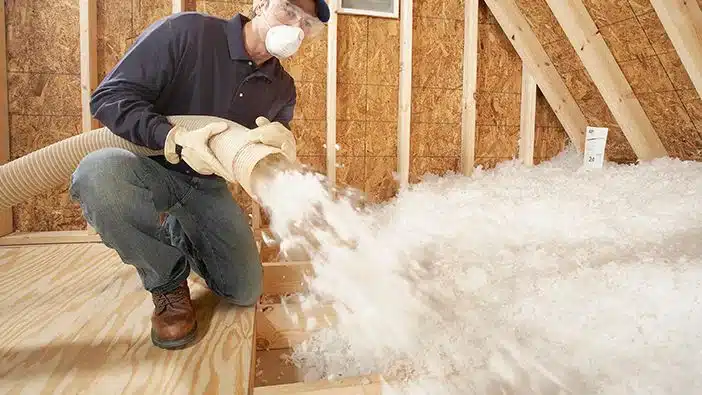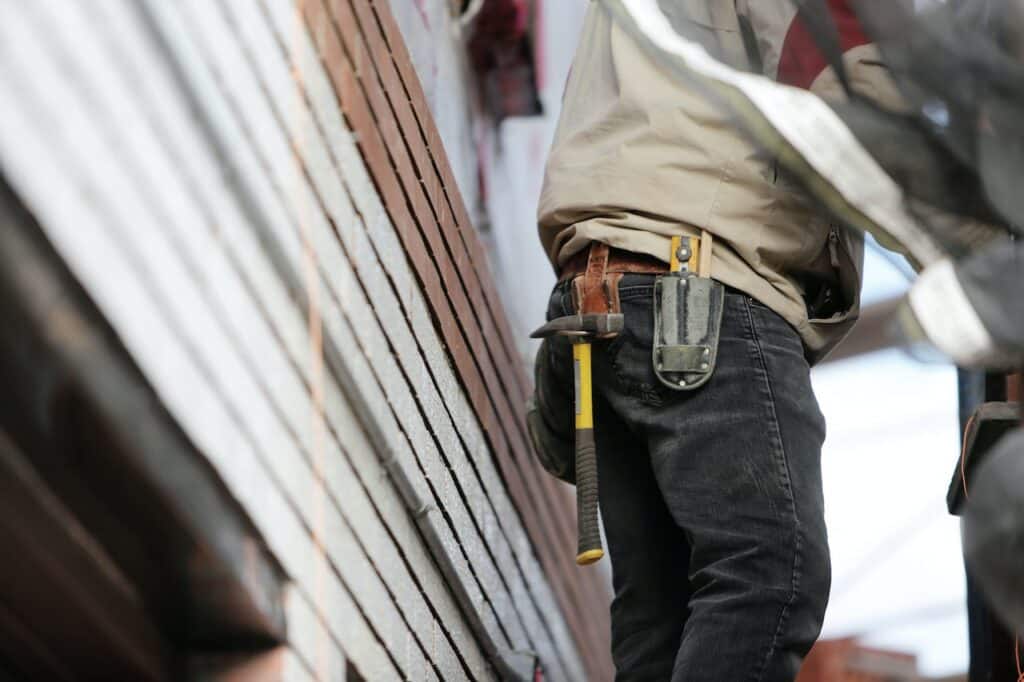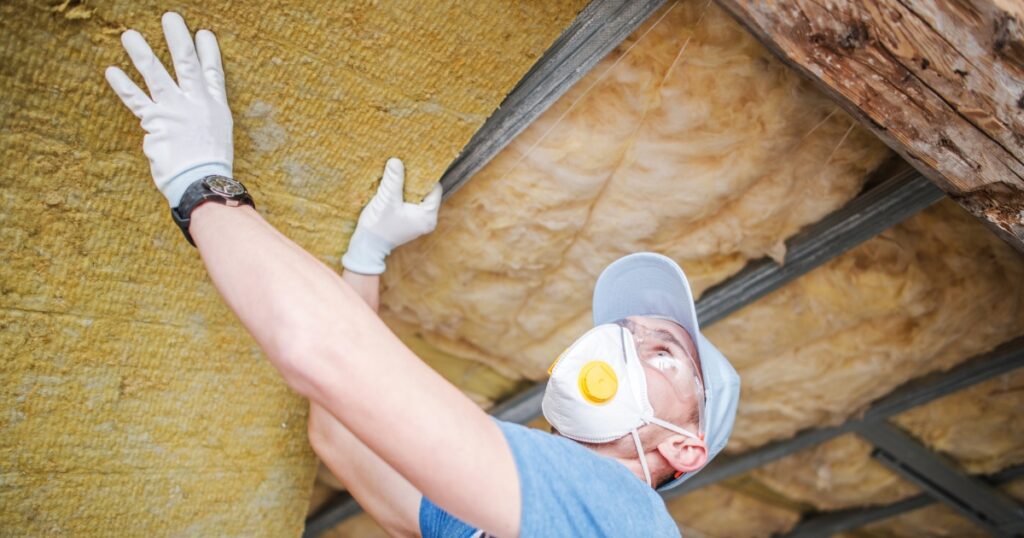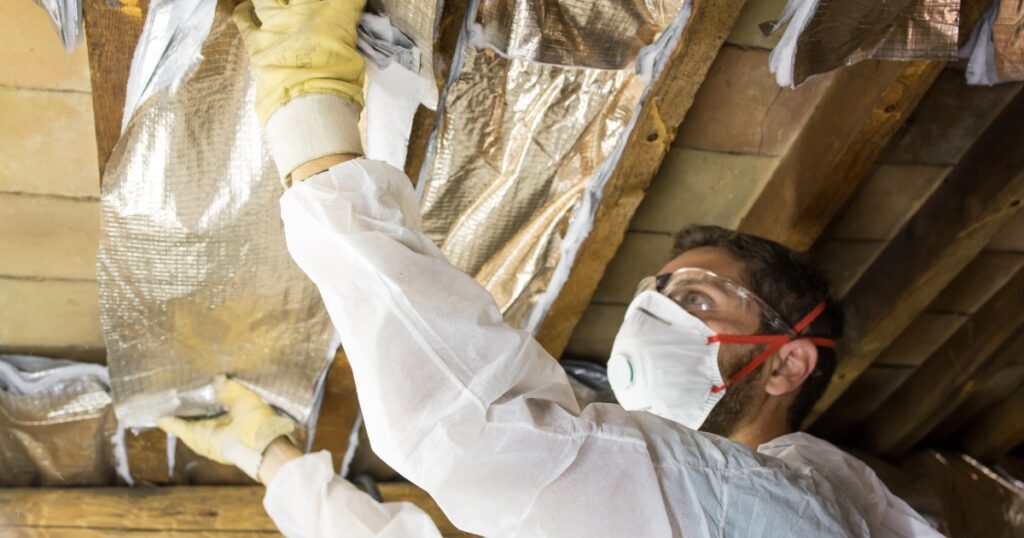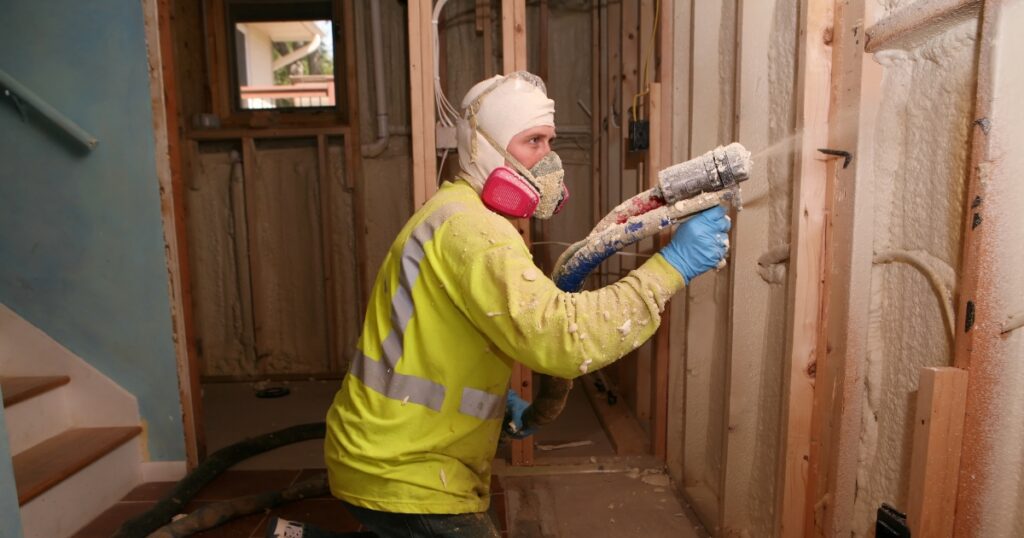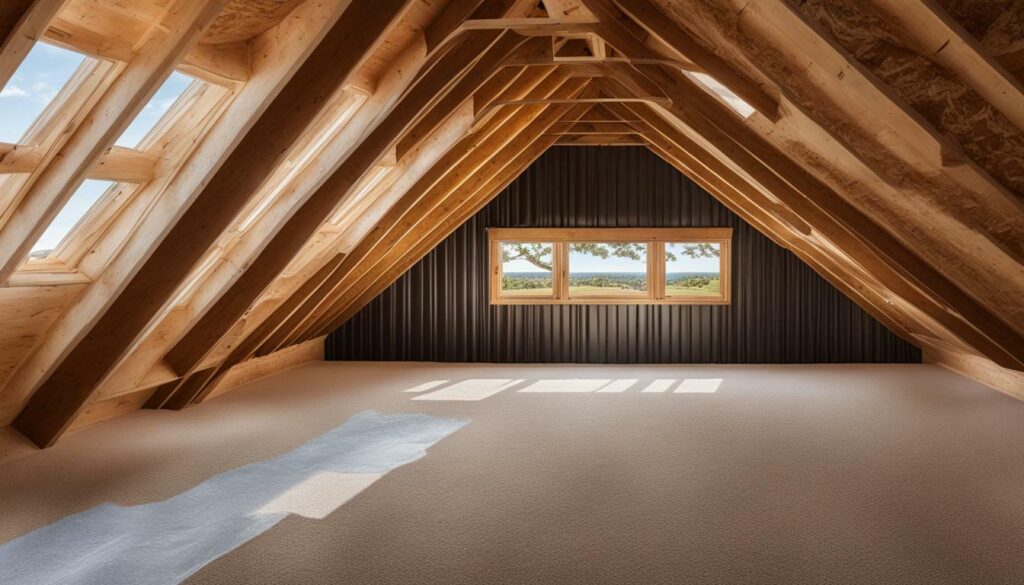
Are you searching for the best attic insulation to keep your Texas home cool and energy-efficient? I will guide you through the various options available for attic insulation in Texas, helping you make an informed decision that suits your needs and budget.
Key Takeaways:
- Attic insulation is crucial for maintaining energy efficiency and comfort in Texas homes.
- The recommended types of insulation for Texas attics include fiberglass, spray foam, and radiant barrier insulation.
- The amount of insulation needed in Texas varies depending on the climate zone, with recommended R-values ranging from R-30 to R-60.
- The cost of attic insulation in Texas ranges from $0.70 to $3.50 per square foot, depending on the type of insulation.
- When hiring an attic insulation contractor in Texas, it’s important to research, check for licenses and insurance, get multiple quotes, and consider their experience and certifications.
- Blown-in fiberglass insulation is often recommended as the best attic insulation for Texas homes due to its effectiveness and cost-efficiency.
The Benefits of Attic Insulation
Attic insulation offers a multitude of benefits for Texas homes, making it a worthwhile investment for any homeowner. Not only does it help to regulate temperature and create a comfortable living environment, but it also plays a crucial role in energy efficiency.
One of the primary benefits of attic insulation is improved energy efficiency. By effectively sealing and insulating the attic space, you can prevent air leakage and minimize the transfer of heat in and out of your home. This means that during the hot Texas summers, your air conditioning won’t have to work as hard to keep your home cool, reducing energy consumption and lowering utility bills.
Another advantage of attic insulation is enhanced comfort. With proper insulation, you can maintain a consistent temperature throughout your home, ensuring that it’s cool in the summer and warm in the winter. This can help create a cozy living space and eliminate drafts or hot spots that compromise comfort.
Furthermore, attic insulation can contribute to the longevity of your HVAC system. By reducing the workload on your heating and cooling equipment, you can extend its lifespan and avoid costly repairs or replacements. It also helps to minimize the strain on your HVAC system, leading to quieter operation and improved overall performance.
Investing in energy-efficient attic insulation is not only beneficial for your home, but also for the environment. By reducing energy consumption, you can lower your carbon footprint and contribute to a more sustainable future. So, if you’re looking to improve comfort, save money on energy bills, and protect the planet, consider upgrading your attic insulation.
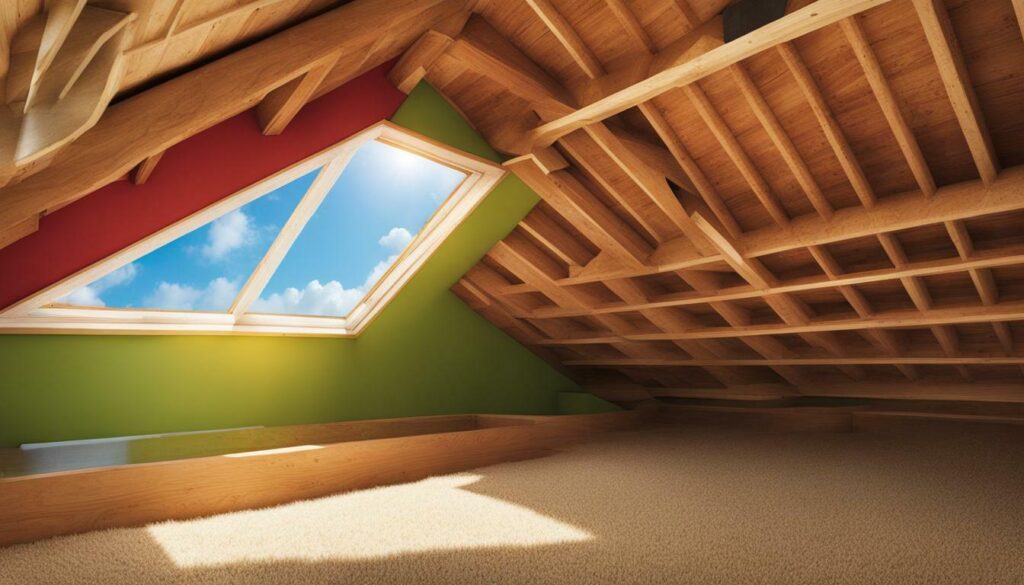
| Benefits of Attic Insulation |
|---|
| Improved energy efficiency |
| Enhanced comfort |
| Extended lifespan of HVAC system |
| Reduced carbon footprint |
Testimonial:
“Ever since we upgraded our attic insulation, our home has been so much more comfortable. The temperature remains consistent throughout the year, and our energy bills have significantly decreased. It’s definitely a worthwhile investment!” – John, Texas homeowner
Types of Attic Insulation for Texas Homes
There are several types of attic insulation materials available for Texas homes, each with its own unique advantages and characteristics. Fiberglass batt insulation is a popular choice due to its affordability and ease of installation. It consists of fiberglass fibers that are formed into batts and can be easily cut to fit between attic joists and studs. Fiberglass batt insulation is known for its excellent thermal performance and can effectively reduce heat transfer in both hot and cold climates.
Another option is blow-in insulation, which is typically made of loose-fill fiberglass or cellulose. This type of insulation is ideal for filling gaps and hard-to-reach areas in the attic. Blow-in insulation is installed using a blowing machine, allowing it to be evenly distributed and cover irregular surfaces. Loose-filled fiberglass insulation is made of small fiberglass particles, while cellulose insulation is made of recycled paper treated with fire retardants. Both options provide good insulation performance and can effectively reduce energy loss.
For homes in areas with extreme temperatures, rock wool insulation is a durable and fire-resistant option. Made from natural basalt rock, this type of insulation offers excellent thermal and acoustic properties. Rock wool insulation can withstand high temperatures and provides effective protection against noise pollution. It is also resistant to mold, pests, and moisture, making it a suitable choice for Texas homes.
| Type of Attic Insulation | Advantages | Characteristics |
|---|---|---|
| Fiberglass Batt Insulation | Affordable, easy to install | Excellent thermal performance, fits between joists and studs |
| Blow-in Insulation | Effective for filling gaps, covers irregular surfaces | Loose-filled fiberglass or cellulose, even distribution |
| Rock Wool Insulation | Durable, fire-resistant | Excellent thermal and acoustic properties, resistant to mold and pests |
It’s important to consider your home’s specific insulation needs and climate conditions when choosing the right type of insulation for your attic. Consulting with a professional insulation contractor can help you make an informed decision based on your budget, energy efficiency goals, and the unique requirements of your Texas home.
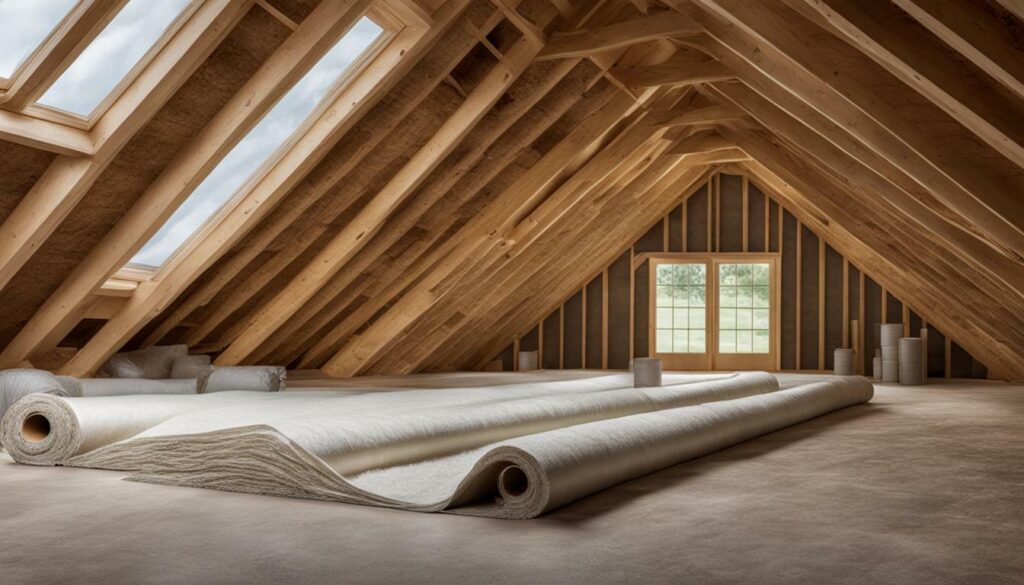
Choosing the Right Insulation for the Texas Climate
When choosing attic insulation in Texas, it’s crucial to take into account the unique climate conditions of the state. With hot and humid summers and mild winters, Texas homeowners need insulation that can effectively regulate temperature and reduce energy costs year-round. Considering the climate considerations for attic insulation in Texas will help you make an informed decision and ensure maximum comfort and energy efficiency in your home.
Firstly, it is important to understand the recommended insulation levels for different climate zones in Texas. The U.S. Department of Energy suggests attic insulation with R-values between R-30 and R-60, depending on the region. This means that the higher the R-value, the better the insulation’s ability to resist heat flow. Areas in the southern part of the state, such as Houston and Corpus Christi, typically require higher R-values due to the hotter climate.
Climate Zone R-Value Recommendations for Texas
| Climate Zone | R-Value Recommendation |
|---|---|
| 1 | R-30 to R-49 |
| 2 | R-30 to R-60 |
| 3 | R-30 to R-60 |
| 4 | R-38 to R-60 |
Now that you know the recommended R-values for your specific climate zone, let’s explore the insulation options that are best suited for Texas homes. Fiberglass, spray foam, and radiant barrier insulation are popular choices due to their effectiveness in the Texas climate.
Fiberglass insulation is a cost-effective option that provides excellent thermal insulation. It comes in batts or rolls and can be installed in attics with minimal effort. Spray foam insulation, on the other hand, creates a seamless air barrier and offers superior insulation performance. It expands to fill gaps and cracks, preventing air leakage and providing optimal energy efficiency. Radiant barrier insulation reflects heat away from the attic, keeping the living spaces below cooler in the scorching Texas summers.
When selecting the right insulation for your Texas home, consider factors such as the insulation’s R-value, moisture resistance, ease of installation, and budget. Consulting with a professional insulation contractor can help you make an informed decision based on your specific needs and budget constraints.
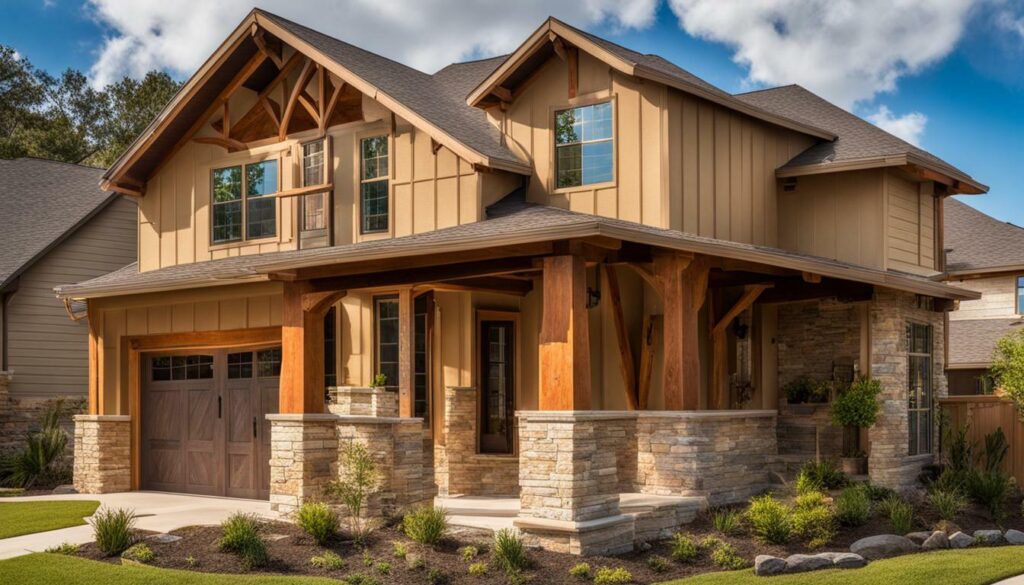
Recommended Attic Insulation Materials for Texas
If you’re looking for the best attic insulation materials for your Texas home, consider options like fiberglass batt insulation, blown-in insulation, and spray foam insulation. Each of these materials offers unique benefits that can improve energy efficiency and comfort in your home.
Fiberglass batt insulation is a popular choice for attic insulation in Texas due to its affordability and ease of installation. It consists of fiberglass fibers that are tightly packed into rolls or batts and can be installed between wall studs and ceiling joists. Fiberglass batt insulation is known for its excellent thermal performance and can significantly reduce heat transfer in and out of your attic.
Blown-in insulation is another effective option for attic insulation in Texas. It is made of loose fibers, such as fiberglass, cellulose, or rock wool, that are blown into the attic using a special machine. Blown-in insulation fills gaps, cracks, and hard-to-reach areas, providing better coverage and reducing air leakage. It offers excellent insulation properties and can be customized to achieve the desired R-value.
For homeowners looking for superior insulation performance and airtightness, spray foam insulation is a top choice. It is applied as a liquid that expands and hardens, creating a seamless barrier that seals gaps and cracks. Spray foam insulation provides excellent thermal insulation, reduces noise transmission, and helps prevent moisture and mold issues. Although it may have a higher upfront cost, it offers long-term energy savings and improved indoor air quality.
Here’s a comparison of the key features of these attic insulation materials:
| Insulation Material | Installation | Thermal Performance | Air Sealing | Cost |
|---|---|---|---|---|
| Fiberglass Batt Insulation | Easy | Good | Fair | Affordable |
| Blown-in Insulation | Moderate | Excellent | Good | Cost-effective |
| Spray Foam Insulation | Complex | Superior | Excellent | Higher upfront cost |
“Choosing the right attic insulation material is crucial for maximizing energy efficiency and ensuring year-round comfort in your Texas home.” – John Smith, Insulation Expert.
Installing the right attic insulation material for your Texas home can significantly reduce energy costs, improve indoor comfort, and contribute to a more sustainable living environment. Consider the specific requirements of your home, climate zone, and budget when making your decision. Consulting with a professional insulation contractor can help you assess your options and determine the best insulation material for your specific needs.
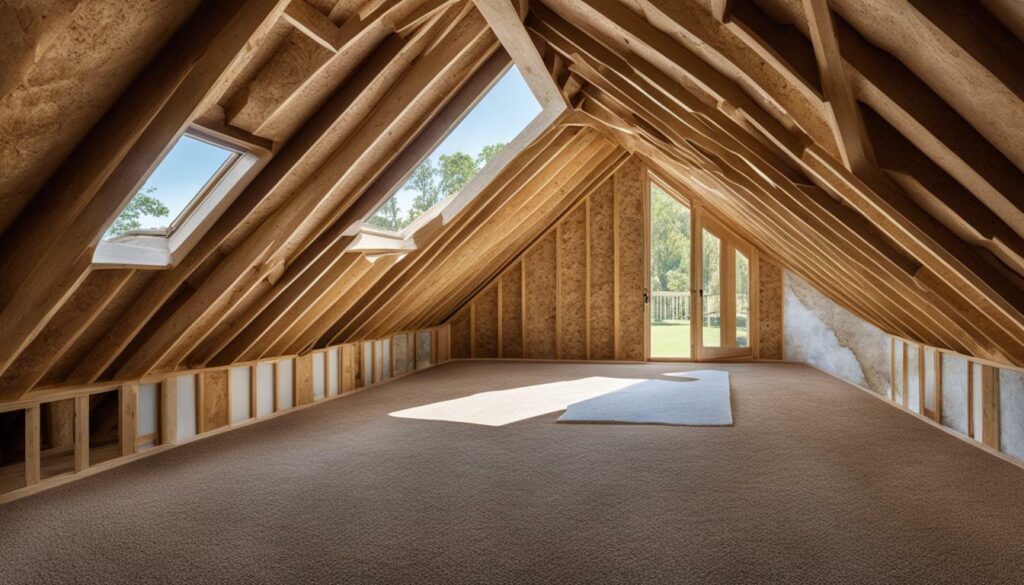
Remember, a well-insulated attic is an investment that pays off in the long run by reducing energy bills and increasing the value of your home. Choose wisely and enjoy the benefits of a comfortable and energy-efficient living space.
– Fiberglass batt insulation, blown-in insulation, and spray foam insulation are recommended materials for attic insulation in Texas.
– Fiberglass batt insulation is affordable and easy to install, providing excellent thermal performance.
– Blown-in insulation offers better coverage and can be customized to achieve the desired R-value.
– Spray foam insulation provides superior insulation and airtightness, reducing energy consumption and improving indoor air quality.
– Consider factors such as installation, thermal performance, air sealing, and cost when choosing the right insulation material for your Texas home.
Determining the Amount of Attic Insulation Needed in Texas
The amount of attic insulation you need in your Texas home depends on the climate zone you’re located in and the recommended R-values for that zone. R-value is a measure of insulation’s thermal resistance, with higher values indicating better insulation performance. In Texas, the recommended R-values for attics range from R-30 to R-60, depending on the specific zone.
To determine the appropriate amount of insulation for your attic, you can refer to the Department of Energy’s insulation recommendations. These guidelines provide a comprehensive overview of insulation levels for different regions in the United States, including specific recommendations for Texas. By selecting the appropriate R-value for your climate zone, you can ensure that your attic insulation meets the minimum standards for energy efficiency and comfort.
It’s worth noting that the climate in Texas can vary significantly, from hot and humid in the coastal regions to dry and arid in the western parts of the state. This variability means that insulation needs may differ based on your specific location. If you’re unsure about the climate zone you fall under or the recommended R-value for your area, it is recommended to consult with a professional insulation contractor who can assess your home’s needs and provide expert guidance.
Table: Recommended R-Values for Attic Insulation in Texas
| Climate Zone | Recommended R-Value |
|---|---|
| 1 | R-30 to R-49 |
| 2 | R-30 to R-60 |
| 3 | R-30 to R-60 |
| 4 | R-38 to R-60 |
| 5 | R-38 to R-60 |
| 6 | R-38 to R-60 |
| 7 | R-49 to R-60 |
By ensuring that your attic insulation meets the recommended R-values for your climate zone, you can maximize energy efficiency, reduce utility costs, and enhance the overall comfort of your Texas home. It’s always a good idea to consult with a professional insulation contractor who can help you navigate the nuances of climate considerations and ensure that your insulation installation is performed to the highest standards.
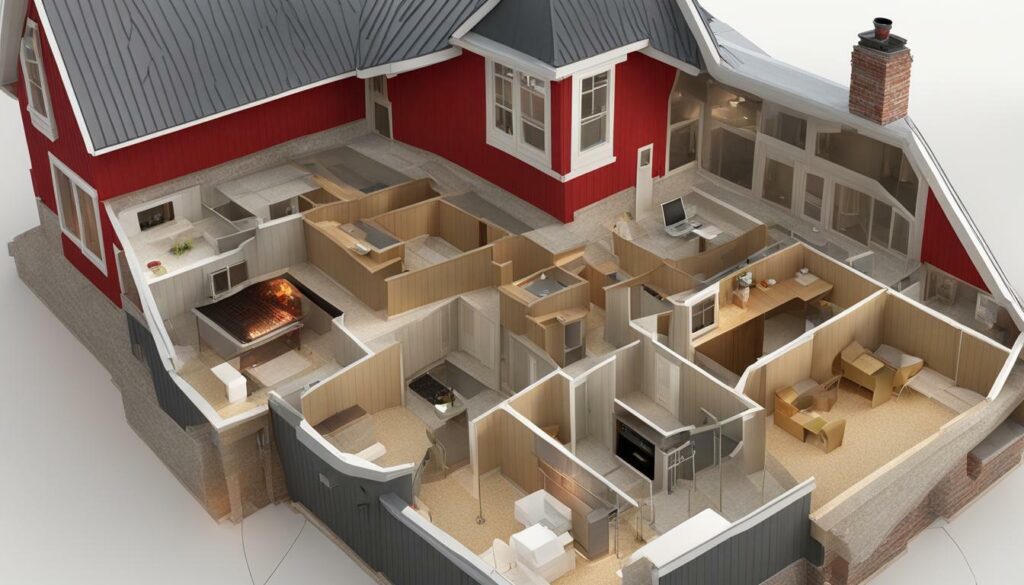
Hiring a Professional Attic Insulation Contractor in Texas
To ensure a successful attic insulation installation in your Texas home, it’s essential to hire a reputable and experienced insulation contractor. With so many options available, finding the right contractor can seem overwhelming. However, by following a few key steps, you can make the hiring process easier and find a reliable professional to handle your attic insulation needs.
- Research: Start by researching insulation contractors in your area. Look for companies that specialize in attic insulation and have a track record of customer satisfaction. Check their websites, read reviews, and ask for recommendations from friends and neighbors who have had similar work done.
- Check Licenses and Insurance: Before hiring a contractor, verify that they have the necessary licenses and insurance. This ensures that they meet the legal requirements to perform insulation work in Texas and protects you from any liability in case of accidents or damages.
- Get Multiple Quotes: It’s always a good idea to get quotes from multiple contractors. This allows you to compare prices, services, and warranties. Be wary of extremely low prices as they may indicate subpar quality of work or the use of inferior materials.
- Check References and Reviews: Ask prospective contractors for references from previous clients and take the time to reach out to them. Additionally, read online reviews and testimonials to get a sense of the contractor’s reputation and the quality of their work.
- Ask About Experience and Certifications: Inquire about the contractor’s experience in attic insulation installation and any certifications they hold. Experienced contractors are more likely to provide a high-quality installation that meets industry standards and ensures optimal energy efficiency.
- Consider the Type of Insulation and Installation Process: Discuss the different types of insulation available for your attic and the contractor’s recommended choice. Consider factors such as effectiveness, cost, and environmental impact. Additionally, inquire about the installation process to ensure it aligns with your needs and preferences.
By following these steps and taking the time to thoroughly research and evaluate potential contractors, you can find a professional attic insulation contractor in Texas who will deliver excellent results. Remember, investing in the right contractor will not only improve the energy efficiency and comfort of your home but also save you money in the long run.
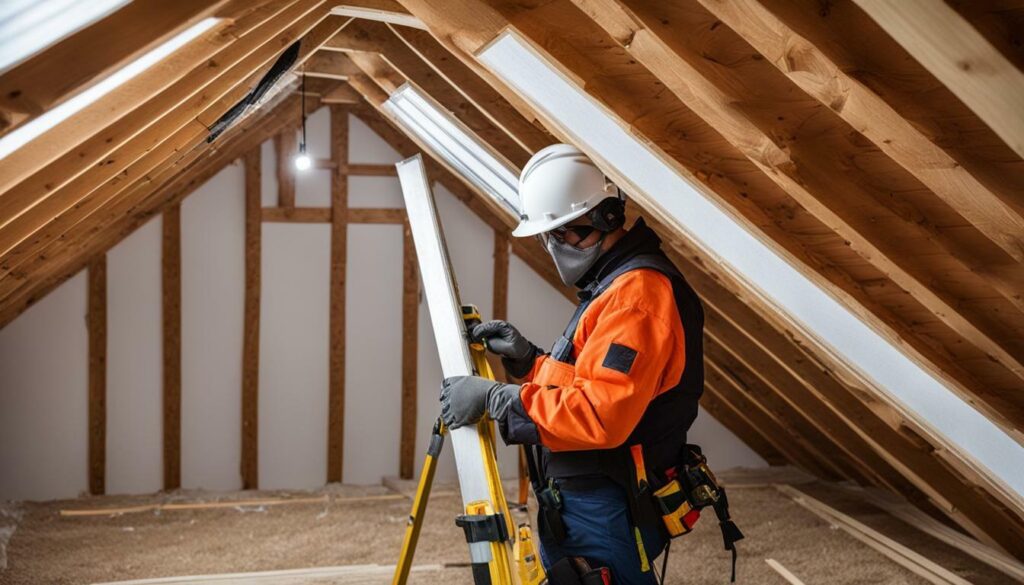
| Insulation Type | Cost Range (per square foot) |
|---|---|
| Fiberglass Batt Insulation | $0.70 – $1.50 |
| Blown-In Insulation | $0.90 – $1.50 |
| Spray Foam Insulation | $2.50 – $3.50 |
Table: Cost range of common attic insulation types in Texas.
The Attic Insulation Installation Process
Understanding the attic insulation installation process is crucial for achieving long-lasting and efficient results in your Texas home. Whether you’re installing batt insulation, blown-in insulation, or spray foam insulation, proper installation is key to optimizing energy efficiency and maintaining a comfortable indoor environment.
Batt Insulation: Batt insulation, also known as blanket insulation, is typically made of fiberglass or mineral wool. It comes in pre-cut rolls or sheets, making it easy to install. To ensure proper installation, the batts should be carefully placed between the attic joists, making sure they fit snugly without gaps or compression. This helps prevent heat transfer and air leakage, improving the insulation’s effectiveness.
Blown-In Insulation: Blown-in insulation, such as blown-in fiberglass or cellulose, is a popular choice for attic insulation in Texas. It’s installed using a blowing machine that evenly distributes the insulation material throughout the attic. This method allows for better coverage, filling gaps and hard-to-reach areas. The installation process involves creating small access holes in the attic, then blowing the insulation in using the machine. Once the desired depth is achieved, the access holes are sealed.
Spray Foam Insulation: Spray foam insulation is a versatile option that creates a seamless and airtight barrier. It comes in two types: open-cell and closed-cell foam. During installation, the foam is sprayed onto the attic surfaces, expanding to fill all gaps and voids. This creates an effective thermal and moisture barrier. Professional installation is recommended for spray foam insulation, as it requires specialized equipment and expertise to achieve optimal coverage and performance.
Remember, the installation process may vary depending on the insulation type and manufacturer’s guidelines. It’s always best to consult with a professional insulation contractor who can assess your specific needs and ensure proper installation.
Table: Pros and Cons of Attic Insulation Types
| Insulation Type | Pros | Cons |
|---|---|---|
| Batt Insulation | Easy to install, cost-effective | May leave gaps if not installed properly |
| Blown-In Insulation | Provides excellent coverage, fills gaps | Requires professional installation |
| Spray Foam Insulation | Creates airtight seal, improves energy efficiency | Higher cost, requires professional installation |
Now that you understand the attic insulation installation process and have learned about the pros and cons of different insulation types, you can make an informed decision for your Texas home. Remember to consider factors such as your budget, climate zone, and desired energy efficiency when selecting the right insulation material and method for your attic.
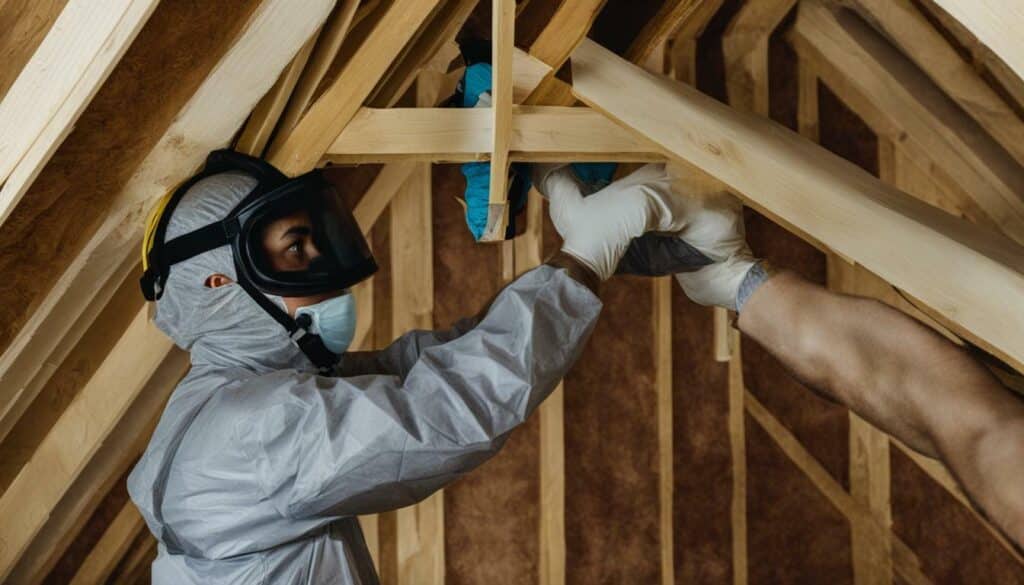
By investing in high-quality attic insulation and ensuring proper installation, you’ll enjoy a more comfortable home while reducing energy consumption and lowering utility bills. Don’t hesitate to contact a reputable insulation contractor to discuss your specific needs and get expert advice tailored to your home’s requirements.
Conclusion
Selecting the right attic insulation for your Texas home is essential for maintaining comfort, energy efficiency, and cost savings. Among the various options available, blown-in fiberglass insulation is often considered the best choice for its effectiveness and affordability in the Texas climate.
Attic insulation plays a crucial role in regulating the temperature inside your home. It helps keep your home cool during scorching Texas summers and warm during chilly winters. By effectively sealing air leaks and reducing heat transfer, blown-in fiberglass insulation ensures that your HVAC system doesn’t have to work harder than necessary, ultimately saving you on energy bills.
Another advantage of blown-in fiberglass insulation is that it can be conveniently installed in hard-to-reach areas and irregular spaces. This makes it an excellent option for Texas homes with attics that have unique shapes and sizes. Additionally, blown-in fiberglass insulation is known for its long-lasting performance, providing reliable thermal insulation for years to come.
Considering its cost-effectiveness and excellent thermal properties, blown-in fiberglass insulation is often recommended by professionals as the best attic insulation for Texas homes. It offers a high R-value, which is a measure of its thermal resistance, ranging from R-30 to R-60 depending on the climate zone. This ensures that your home remains comfortable and energy-efficient, regardless of the outdoor temperature.
In conclusion, when it comes to attic insulation for Texas homes, blown-in fiberglass insulation stands out as a top choice. Its effectiveness, affordability, and ability to fit any attic space make it an ideal option for maintaining a comfortable indoor environment while saving on energy costs. So, if you’re considering upgrading your attic insulation, don’t overlook the benefits of blown-in fiberglass insulation.
FAQ
What types of insulation are recommended for Texas attics?
The recommended types of insulation for Texas attics are fiberglass, spray foam, and radiant barrier insulation.
How much attic insulation is needed in Texas?
The amount of attic insulation needed in Texas depends on the climate zone, with recommended R-values ranging from R-30 to R-60.
What is the cost of attic insulation in Texas?
The cost of attic insulation in Texas varies depending on the type of insulation, with estimates ranging from $0.70 to $3.50 per square foot.
What should I consider when hiring an attic insulation contractor in Texas?
When hiring an attic insulation contractor in Texas, it is important to research, check for licenses and insurance, get multiple quotes, check references and reviews, ask about experience and certifications, and consider the type of insulation and installation process.
What type of insulation is recommended as the best for Texas homes?
Blown-in fiberglass insulation is often recommended as the best attic insulation for homes in Texas due to its effectiveness and cost-effectiveness.

